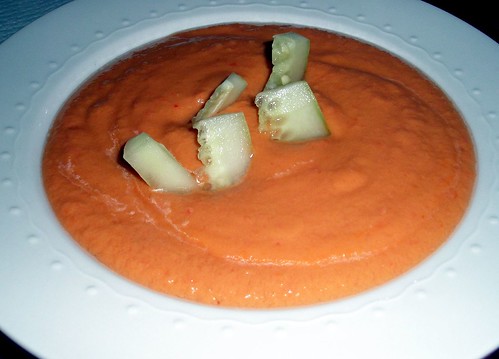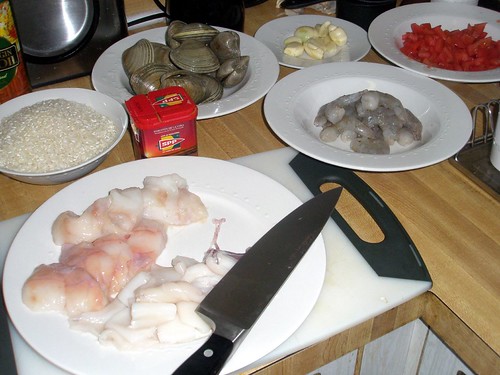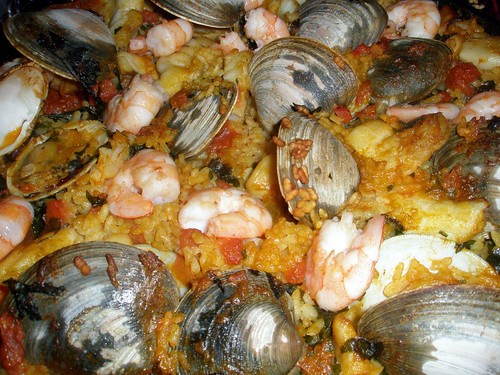Monkfish is one of my go to fish as it’s simple to cook and fairly economical. Roasting is the easiest method of cooking monkfish, but I find roast monkfish to be somewhat boring in flavor and not at all aesthetically pleasing (think of an all-white blob on a plate). Fortunately, this recipe for Roast Monkfish with Eggplant Allioli and Sautéed Yellow Peppers from Anya von Bremzen’s The New Spanish Table resolves many of the deficiencies I find with roast monkfish. By browning the allioli, the fish takes on a leopard skin-like appearance that is much more pleasing to the eye than the usual white-on-white roast monkfish flavor. Most importantly, the eggplant allioli gives the dish a smoky flavor that lends nuance to each bite.
resolves many of the deficiencies I find with roast monkfish. By browning the allioli, the fish takes on a leopard skin-like appearance that is much more pleasing to the eye than the usual white-on-white roast monkfish flavor. Most importantly, the eggplant allioli gives the dish a smoky flavor that lends nuance to each bite.
Monkfish with Eggplant Allioli
For the allioli:
- 1 Asian eggplant
- 3 garlic cloves, chopped
- 1 egg
- 2 tbsp lemon juice
- ¾ cup olive oil
- Kosher salt, to taste
- 2 tbsp olive oil
- 4 yellow bell peppers, thinly sliced
- 2 garlic cloves, minced
- 2 tbsp dry white wine
- 4 6 oz. monkfish fillets, gray membrane removed
- Kosher salt
- Make the allioli. First, char the eggplant skin over the flame of a gas burner. Frequently rotate the eggplant with thongs until the skin is completely charred, about 7 minutes. Let the eggplant cool on a plate until it is cool enough to touch, then peel away and discard the skin. Coarsely chop the eggplant and put it in the bowl of a food processor. Add garlic, egg, and lemon juice to the food processor. Run the food processor until the ingredients are pureed. With the motor still running, slowly pour in ¾ cup olive oil and continue running the food processor until the mixture is well emulsified. Season the allioli with salt and set aside for at least 30 minute to let the flavors meld.
- Heat the oven to 450F.
- Heat 2 tbsp olive oil in a large skillet over medium-high heat. Add the peppers and garlic and cook, stirring occasionally, until the peppers soften, about 3 minutes. Add the wine, reduce the heat to a simmer, cover, and cook the peppers until they are very soft, about 25 minutes. Stir the peppers occasionally.
- Season the fish fillets with salt and brush it all over with olive oil. Let the fish sit for 10 minutes.
- Plan the fish on a baking sheet and roast until it is cooked through, about 15 minutes. Remove the fish from the oven.
- Preheat the broiler.
- Top each fillet with a few spoonfuls of the allioli. Broil the fish until the allioli browns, about 3 minutes. Set the fish over the peppers and the pepper cooking liquid and serve immediately.
















